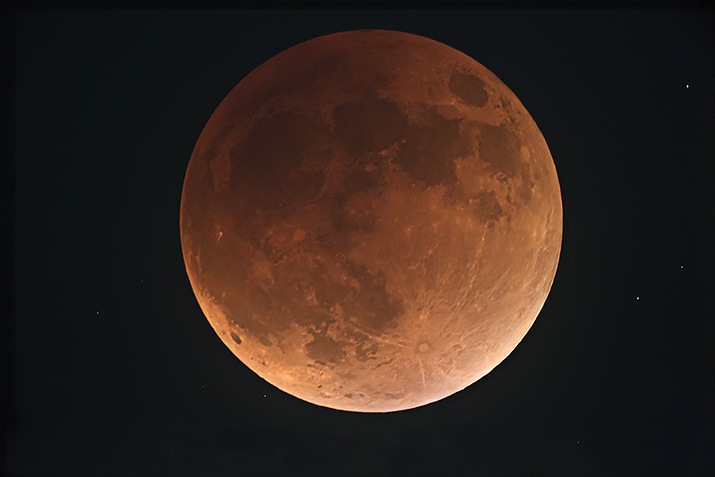
|
Date: Sept. 27, 2015 - Location: UNT's Rafes Urban Astronomy Center - Denton,TX Telescope: Celestron EdgeHD 8 Camera: Canon EOS 5D Mark III Exposures: .8 sec. - Image composition = 3 sub-exposures Credits: - Image Capture: Preston Starr - Processing: Donald Waid Click on the image below to view at higher resolution. |

|
On Sept. 27, 2015, as seen in North America, a total lunar eclipse took place only 59 minutes past the Moon's orbital perigee. (The Moon's closest approach to the Earth.) This is somewhat of an infrequent, if not rare, occurrence. The net effect of this celestial occurrence is an eclipse of the largest full Moon visible from the Earth. This is sometimes referred to as a supermoon eclipse. The last time this event took place was in 1982. When the Moon passes through the Earth's shadow the light from the sun is blocked and the Moon darkens. During the eclipse, a portion of the Sun's light is refracted, or bent, by the Earth's atmosphere and dimly illuminates the Moon. This effect is strongest in the red portion of the spectrum. This causes the Moon to appear a dim reddish brown hue. The term Blood Moon is often used to describe the appearance of a total lunar eclipse.
The image above was captured at the University of North Texas's Rafes Urban Astronomy Center located in Denton, Texas. The University opened the Astronomy Center for a public viewing of the September 27th eclipse. The Center's telescopes and video screens were used to project images of the rare supermoon eclipse. Participants were able to take photos of the Moon using their cameras and smart phones. Over a thousand people were in attendance to view this remarkable, and rare, celestial event.
|